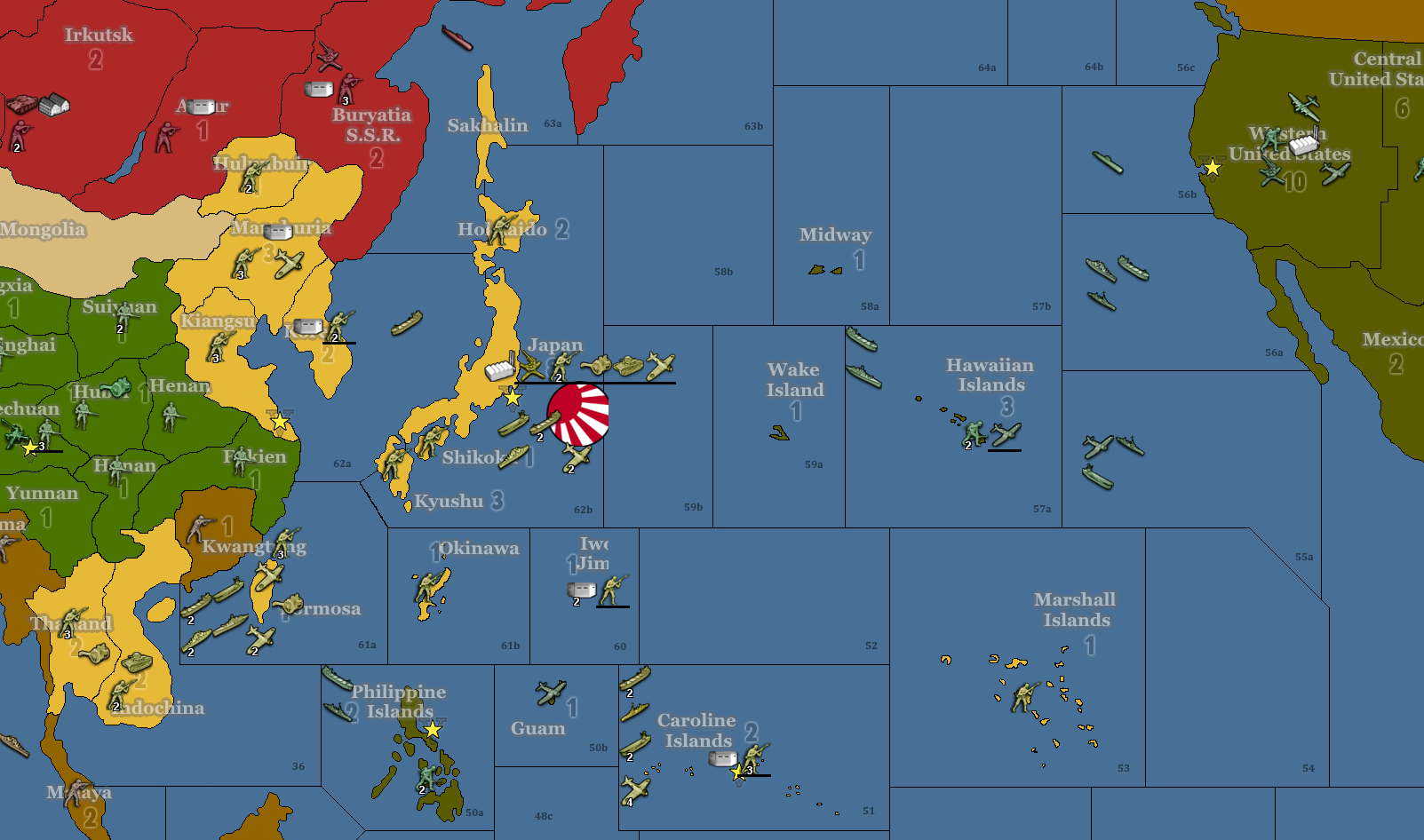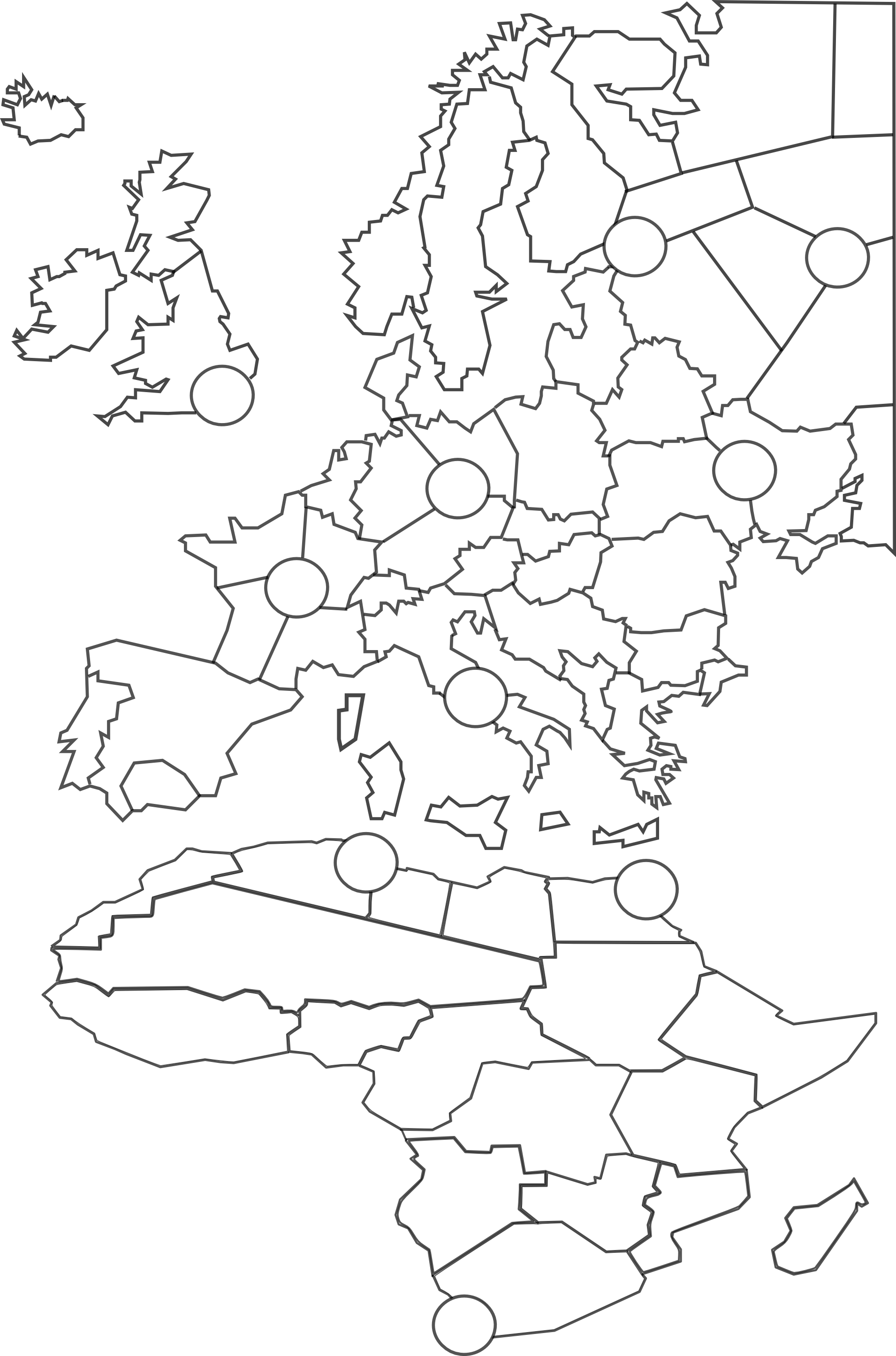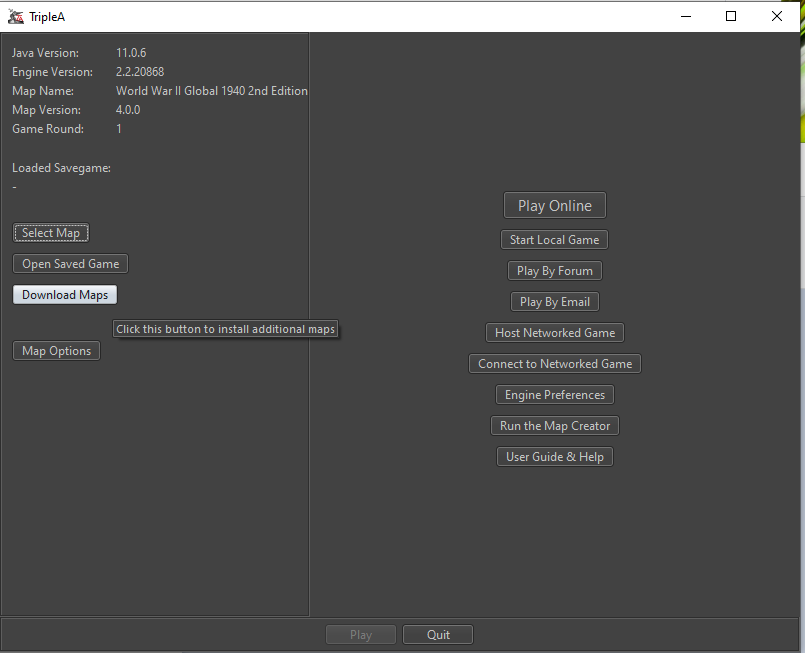Hello! I’m starting this thread to show off drafts of a new map for TripleA that I’m working on. I call it the “middleweight” map because it’s meant to have a medium size and complexity – somewhat larger than Revised, but somewhat smaller than World at War. I’ll be updating this top post as I progress through the design work. Some of my design goals for this map include:
(1) Break up the “capital areas” into multiple tiles, so that central Germany, continental USA, mainland Japan, etc. are not so easy to defend.
(2) Add a few buffer tiles that are meant to be traded back and forth in the opening so that players don’t lose their capitals or their entire economies on the first turn, e.g., Belgium and Argonne between France and Germany, or Vladivostok and Buryatia between Siberia and Manchuria.
(3) Place virtually all islands between sea zones instead of inside sea zones, so that controlling islands is a useful way to improve your mobility and logistics – you don’t have to waste an entire flying into and out of each sea zone, for example.
(4) Ensure that crossing the Atlantic and Pacific Oceans is difficult yet possible – players should have to put some thought and advance planning into how and where to cross, but the time lag should not be so extreme that you have to buy transports on turn 1 to have a chance of retaking a victory city on turn 5.
(5) Eliminate most of the ‘extra’ tiles in Siberia, China, Africa, etc. that are meant to take up space and slow down enemy invasions…enemy invasions should be slowed by defending troops in plausible chokepoints, not by sheer distance alone.
(6) Use clear visual signals to help call attention to the strategic features of the map, e.g., all Allies in light colors and all Axis in dark colors; all victory cities are in large circles that look visually distinct from other territories.
(7) Enhance replayability by offering many different economically valuable theaters to fight in; all territories are worth at least 1 IPC, and it should not be obvious which direction(s) each nation should be trying to expand.
(8) Reduce the importance of capital looting; you can still steal some cash when you sack a capital, but it shouldn’t totally shut down a players’ ability to manufacture new units.
The screenshots below are very early drafts; I haven’t assigned territory values or put down starting units yet, but hopefully it will give you an idea of where I’m headed. Feedback on game balance, strategy, software bugs (e.g. territories are missing a connection) and user experience is extremely welcome at all times. Feedback on graphic design and historical accuracy is welcome primarily if you are volunteering to do some of the work of improving those areas of the game, e.g., if you want to contribute some images or edit the .xml file to include proper country names, great, I will be happy to send you the files; if you just want to complain that I got your favorite territory’s name wrong, that’s not as useful.
I plan to make two different scenarios for this map, one for 1939 and one for 1942. If you want to make a different scenario, I will be happy to send you the source files! As always, thanks to all of my buddies here on the forum who have contributed ideas, images, and feedback over the years – I could not have started this project without you, and, frankly, if I didn’t have buddies like you to hang out with, then I wouldn’t even want to work on this type of map. :-)
1939:

1942:






